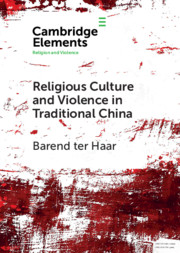Element contents
Religious Culture and Violence in Traditional China
Published online by Cambridge University Press: 11 May 2019
Summary
- Type
- Element
- Information
- Online ISBN: 9781108613392Publisher: Cambridge University PressPrint publication: 30 May 2019
Bibliography
- 6
- Cited by



